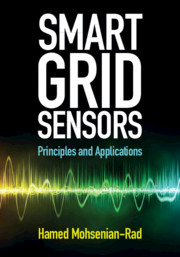Book contents
- Frontmatter
- Dedication
- Contents
- Preface
- 1 Background
- 2 Voltage and Current Measurements and Their Applications
- 3 Phasor and Synchrophasor Measurements and Their Applications
- 4 Waveform and Power Quality Measurements and Their Applications
- 5 Power and Energy Measurements and Their Applications
- 6 Probing and Its Applications
- 7 Other Sensors and Off-Domain Measurements and Their Applications
- References
- Index
6 - Probing and Its Applications
Published online by Cambridge University Press: 21 April 2022
- Frontmatter
- Dedication
- Contents
- Preface
- 1 Background
- 2 Voltage and Current Measurements and Their Applications
- 3 Phasor and Synchrophasor Measurements and Their Applications
- 4 Waveform and Power Quality Measurements and Their Applications
- 5 Power and Energy Measurements and Their Applications
- 6 Probing and Its Applications
- 7 Other Sensors and Off-Domain Measurements and Their Applications
- References
- Index
Summary
This chapter is about the use of probing techniques in smart grid sensing. Probing is the broad technique of perturbing the power system to achieve enhanced monitoring capabilities. Rather than only passively collecting measurements, probing methods make use of various grid components to actively create opportunities to learn more about the power system and its unknowns. We explore the applications of probing in state and parameter estimation to enhance observability and redundancy. Applications of probing in topology identification, phase identification, model-free control, and repeatable modal analysis are also discussed. Examples of creating the probing signal, such as by using resistive brakes or intermittent wave modulation are explained. We also discuss the use of power line communications as a probing tool to diagnose incipient faults and locate faults in power cables. Applications of probing via power line communications are discussed also in topology identification and phase identification.
- Type
- Chapter
- Information
- Smart Grid SensorsPrinciples and Applications, pp. 248 - 274Publisher: Cambridge University PressPrint publication year: 2022

